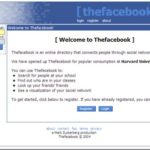Leadership & influence
You cannot be an effective leader without influence. Let me make this as simple as I can – if you’re a leader, influence needs to be a competency.
The key to developing influence is understanding that contacts and relationships are not synonymous. Don’t confuse a database with a sphere of influence. A database consists of information records, and a sphere of influence consists of meaningful relationships built upon a foundation of trust – a point of distinction lost upon many.
Spammers and info-product sales people add contacts to a database, while savvy professionals interested in creating influence invest into people for the purpose of building relationships. In today’s post I’ll describe how to create influence by developing high value relationships.
As business people nothing is more valuable than the quality of your relationships. Whether you realise it or not, your success in business (and in life in general) will largely be dependant upon your ability to not only establish key relationships, but in your ability to leverage, influence, and add value to your relationships. We have all known professionals that have been smarter, more affable, better looking, possess a better CV, or are more talented than their peers, yet they never seem to rise to the top. These professionals that seem to have the whole package yet fail to reach the brass ring simply don’t understand the power of relationships.
Lest you think I’m overly mercenary in my approach, and only view people as pawns in a chess game, let me introduce you to Myatt’s golden rule of building relationships: ”Give, give, give some more, give until it hurts, and then when you have nothing left to give, you guessed it…give even more.”
The best relationships are not built on the backs of others, but rather they are built by helping others succeed. It is by building into others and through assisting others in reaching their goals and objectives that you will find success. Reflect back upon your own experience and contrast the responses you’ve received when you ask for help from someone that you’ve previously provided assistance to, versus asking the same favor from a casual acquaintance that you’ve never lifted a finger to help.
Generally speaking there are two types of spheres of influence…those that just evolve over time by default, and those that are strategically engineered. While contacts are rarely purpose driven, relationships are highly intentional. People who are influential have spent years developing relationships spanning geographies, industries, and practice areas. They have invested both time and money developing these relationships to a high level of mutual benefit.
So why is it that most people aren’t as influential as they would like to be? The answer is that most professionals, even if they intellectually understand the benefits of what I’m espousing, just don’t do the work it takes to build an influential network. Great relationships take great amounts of effort, energy and commitment. Think of the most successful people you’ve ever known and they will always seem to know the right person to call on in any given situation to influence or decision the needed outcome. This type of influence doesn’t just happen, rather it has taken years of painstaking effort. If you want to create a powerful sphere of influence start by taking the following six steps:
- Create a Vision: Take pause and examine where you are currently in your professional career as contrasted with where you want to go. Think about the people who could help you reach your destination more quickly and efficiently. Don’t put any artificial ceilings on your thinking – remember that almost anyone on the planet is only a few degrees of separation away from you. Be sure that your vision is based first and foremost on adding value to the lives and careers of others. Building a great relationship has little to do with what you get out of it, but everything to do with what you put into it…
- Take an Inventory: Once you have a clear vision of where you want to go, take a personal inventory of your contacts and relationships. See who it is that you know, but also pay attention to who they know. Review in detail each and every relationship in your network and rank them on a scale from 1 to 5 with 5 being the contacts perceived to be of the greatest value to you. Make a detailed relationship plan for each of the people that rank 3 or higher. Take a personal interest in rekindling those relationships and finding out how you can help them succeed.
- Participate in the Dialogue: Develop a strong core competency, and then give freely of your time and knowledge. Be visible and accessible and don’t approach business solely based on a “what’s in it for me” attitude. Don’t be a joiner unless you can be a contributor. I belong to a number of organizations that I will likely never see a paying client from, but it is through these groups that I build relationships and connections that will help me serve my clients. These relationships are built upon the back of the time I invest in them. Relationships don’t get built overnight, and are not built without active participation.
- Value Your Network: It is critical that you develop a keen understanding that your network is your business…The core value of your business is not actually steeped in the conventional thinking imparted to you in business school. The reality is that the true intrinsic value of a business is in the network that adds value to your products, services, brand, stakeholders etc. A strong network = sustainability in that it is your network that will provide you much needed resources, influence and leverage in both good times and bad.
- Focus on the Positive: Don’t waste time with those that only see problems and flaws, but cannot ever seem to create solutions. The world is full of bitter people, small thinkers, naysayers and those that just get their kicks out of sniping from a safe distance. Remove these people from your network. Associate with energy gainers and not energy drainers. People do business with people they like, and avoid doing business with people they don’t like…it’s just that simple. Are you approachable, positive, affable, trustworthy, a person of character and integrity, or are you someone who is standoffish, pessimistic and generally not to be trusted? Those who fall into the camp of the former as opposed to the latter will find themselves having more influence and success. The key take away here is that being a jerk doesn’t lead to the creation of influence.
- Quantity and Quality Both Matter: Successful networking requires an understanding that there needs to be a balance between quantity and quality. Well built spheres of influence are both inclusive and exclusive, and while the emphasis should always error on the side of quality, this assumes that you have sufficient numbers to create leverage and scale to your networking efforts. You want to avoid at all costs the appearance of simply being in it solely for the numbers, but it is also important not to be viewed as a networking snob who doesn’t reciprocate.
- Influence is built upon a foundation of trust: If a person is not trusted there is a firm limit on their ability to create and use influence. People will rarely make a leap of faith for someone who hasn’t earned their trust. However most people will gladly take a blind leap of faith for someone whom they have come to trust. Trust Matters…
- Influence is built upon making others successful: This is often times referred to as the law of reciprocity. The theory is that if you invest yourself in making someone else successful then they in turn will likely be predisposed to helping you become successful. While this principle will not always pan out, in my experience it has held true across the overwhelming majority of my interactions through the years. True influence is rarely built upon the backs of others, but rather by helping others achieve their goals.
- Influence is most often possessed by those with authority: It is important to realize that there is a reason for the statement “the highest authority is that which is given, and rarely that which is taken.” Authority is most often given to those that display honesty, competency, expertise and wisdom. With authority comes credibility, and with credibility comes influence. While influence can be wielded by those without authority, it will be limited in both scope and scale. Those with the most authority will always have the most influence.
- Value and scarcity drive influence: Understanding the value of your position, brand, authority, resources, access to people or knowledge and any number of other items as it relates to fulfilling the needs and desires of others creates influence. To the extent that anything under your direct or indirect control is scarce or proprietary your ability to create influence will increase significantly. Keep in mind that the purpose of developing influence is not to manipulate for personal gain, but rather to facilitate for mutual benefit. Take a sincere interest in the success of others, work on your likability factor, become adept at gaining commitment, develop your authority and control, and have access to things of value or scarcity and your influence with others will increase.
Bottom line…engineer a relationship development plan built upon service, trust, giving and adding value – then work the plan. Before you whine about how much time this will take, consider if you will the potential rewards at stake and ask yourself this question: Can I afford not to do this?
If you have any additional tips or advice to add to what you’ve just read, I’d love to have your feedback and input in the comments section below…
This opinion piece was first published on the Deloitte Leadership Academy and is reproduced here with the kind permission of the author, Mike Myatt who is managing director & chief strategy officer at N2Growth.



